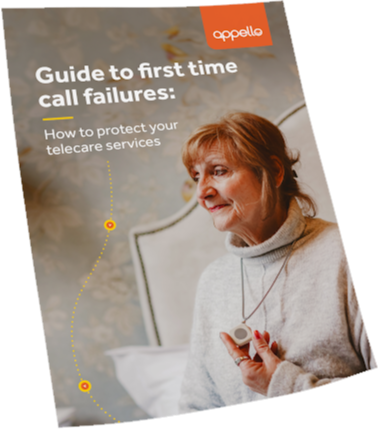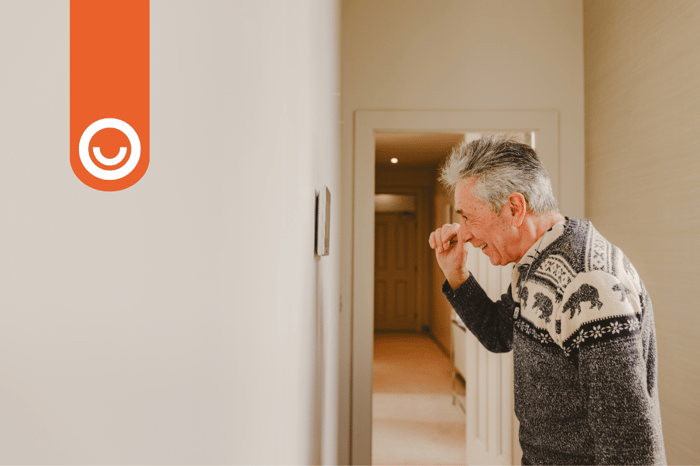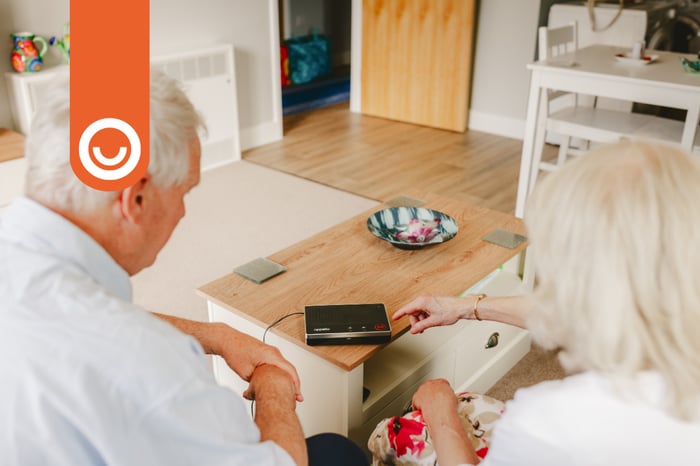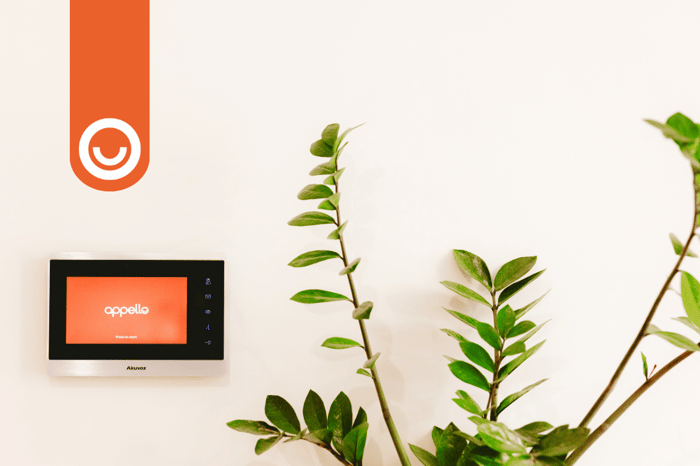Digital telecare is the way forward for telecare in the UK, we are all getting used to that idea now. Some housing providers in fact, are already well on their way with their digital telecare journey.
Understandably there was a time of confusion and apprehension, as we realised our old equipment wasn’t fit for purpose. Now, most are very excited about what digital means for their housing organisation and residents.
The endless possibilities with digital has led to excitement about smart home capabilities, medical intervention, video appointments, and a whole host of other features that are very real. But, in all this excitement we may have forgotten to really highlight the significant improvements that digital has enabled emergency calling. In fact, digital has enabled us to overcome some of the age old problems with telecare equipment, that housing providers have been requesting for years.
After all, being able to raise an alert, and receive help in a time of need, is the fundamental feature of any telecare alarm system. So, briefly I will highlight and remind you of the improvements that digital systems offer in relation to alarm calls.
1. Above all, fully end-to-end digital systems are designed to be compatible with the changes that are taking place by the UK telecoms providers.
Older analogue systems work on different protocols to those of the new telecoms infrastructure being put in by BT, Virgin and others. As a result, those older systems are failing, at about a rising rate of 11% of first-time calls. This obviously creates significant risk, and these risks are over come by compatible digital systems.
2. An amazing limitation of analogue equipment was that only one call could be placed at a time.
If one resident was using the system, another would have to wait until their call had finished. In many developments, even if the postman was at the door using the door entry system, a resident couldn’t raise an emergency alarm. Ridiculous, right? Well with digital these limitations are removed, every resident can raise an alarm at the same time, and no Amazon delivery will impact this!
3. When activating an alarm, analogue systems would need to dial up, much like an old telephone, or even the first type of internet connection.
This would take anywhere upwards of 1.40s, which can feel like an eternity in an emergency. Unsurprisingly digital systems are much quicker, in fact it takes about 3 seconds for a call to reach a monitoring centre.
4. Emergency calls where no one can be heard, often referred to as ‘No speech’ calls can be costly, frustrating and also impact the ability for residents to receive the help they need.
If an incident occurs in a different room to the main telecare equipment, it can often be difficult for the individual to communicate with the operator providing help. Digital telecare has enabled far greater coverage across a home. The likes of Bluetooth connected speakers/microphones and apps on tablet devices means that telecare equipment can now easily be in every room in the home.
5. Clarity and two-way speech.
Many older systems have very poor speech quality, and talking is like a walkie-talkie, so only one end of the line can speak at a time. This is well known to cause confusion, and frustration, especially in a emergency situation. As you would expect digital systems come with crystal clear sound and duplex speech, meaning it is just like a telephone call.
6. Battery life.
How many of your residents have gone to press their pendant only to find that the battery had died. Rightly, they will have been advised to test on a regular basis, but with no indication of battery life it is difficult to identify exactly when a battery would need replacing. This is a basic improvement, but one that can be so critical, with digital systems onsite staff are provided with notifications of the battery status of a pendant, and also the status of any device.
7. Lastly, appearance, one of the major problems with telecare has been the aesthetics.
The connotations and stereotypes drawn from large beige boxes or pendants made telecare a sign of vulnerability, and something that was often hidden away of not used. Modern digital equipment has an appearance that fits with your new TV, and as a result, residents are equally as proud to have it on display.
I will leave it at these seven points, but there are many other improvements to just the emergency alarm feature including greater knowledge of device location, far superior onsite management of equipment, and easy access to data. All of these points make digital telecare a huge step in the right direction for the sector, that’s before you even consider the other features and benefits digital offers.
You can find more details on the issue of first time call failures in our latest guide, which is available to download now

Talk to us to discuss your requirements and find out about our cost-effective and future proof digital solutions.



